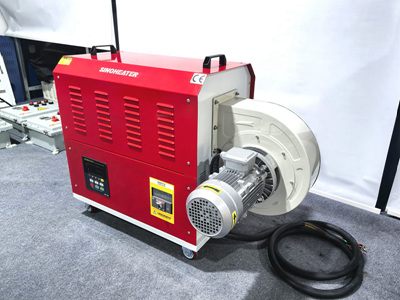Solutions for Frequent Overheat Protection Trips in Heat Blowers
Frequent activation of a heat blower’s overheat protection mechanism disrupts operation and may indicate underlying issues. Addressing the root causes requires systematic inspection and adjustments. Below are detailed steps to resolve this problem.
1. Understanding Overheat Protection Mechanisms and Common Triggers
Grasping how overheat protection works helps identify potential causes.
- How Overheat Protection Works: Most heat blowers use thermal sensors or bimetallic switches to monitor internal temperatures. If temperatures exceed safe limits, the system cuts power to prevent damage.
- Common Causes of Overheating: Blocked air vents, restricted airflow, malfunctioning fans, faulty heating elements, or environmental factors (e.g., high ambient temperatures) can trigger overheat protection.
- Symptoms to Watch For: The unit shuts off unexpectedly, emits burning smells, or the blower runs loudly before shutting down. These signs often precede overheat trips.
2. Checking and Improving Airflow and Ventilation
Insufficient airflow is a leading cause of overheating.
- Inspect Air Inlets and Outlets: Remove the heat blower’s housing or filter covers to access air vents. Clear debris, dust, or obstructions from intake grilles and exhaust ports. Use a vacuum or compressed air to dislodge buildup.
- Clean or Replace Filters: Dirty filters restrict airflow, forcing the unit to work harder. Remove filters and rinse them under running water if washable. For non-washable filters, replace them according to the manufacturer’s guidelines.
- Ensure Proper Placement: Avoid placing the heat blower in enclosed spaces or near walls, curtains, or furniture that block airflow. Maintain at least 12 inches of clearance around the unit.
3. Verifying Fan and Motor Functionality
A malfunctioning fan or motor can reduce air circulation and cause overheating.
- Test Fan Operation: Turn on the heat blower and listen for the fan. If it doesn’t spin or makes grinding noises, the motor may be failing. Disconnect power and manually spin the fan blade—it should rotate freely. If it’s stiff or wobbly, the motor bearings may need lubrication or replacement.
- Check Fan Blades for Damage: Inspect blades for cracks, chips, or warping. Bent or broken blades reduce efficiency and can cause imbalance. Repair minor damage with adhesive or replace severely damaged blades.
- Lubricate Motor Bearings: If the motor is noisy or runs hot, apply a few drops of lightweight machine oil to the bearings (following the manufacturer’s instructions). Avoid over-lubricating, as excess oil can attract dust.
4. Examining the Heating Element and Thermal Sensor
Faulty heating elements or sensors can misreport temperatures and trigger overheat protection.
- Inspect the Heating Element: Disconnect power and visually examine the heating element for signs of damage, such as cracks, discoloration, or broken coils. A damaged element may overheat or fail to heat evenly.
- Test the Thermal Sensor: Use a multimeter to check the sensor’s resistance. Compare readings to the manufacturer’s specifications—a faulty sensor may show erratic or incorrect values. If the sensor is integrated into the control board, consult a professional for testing.
- Replace Faulty Components: If the heating element or sensor is damaged, replace it with a compatible part. Ensure the replacement matches the original’s specifications to avoid compatibility issues.
5. Addressing Environmental and Usage Factors
External conditions and usage habits can contribute to overheating.
- Lower Ambient Temperature: Operate the heat blower in a cooler environment if possible. Avoid using it in direct sunlight, near heat sources, or in poorly ventilated rooms.
- Adjust Power Settings: Use the heat blower on a lower setting if overheating occurs frequently at higher temperatures. Many units allow users to toggle between heat levels—experiment to find the optimal balance between warmth and efficiency.
- Limit Continuous Operation: Allow the unit to cool down periodically if used for extended periods. Turn it off for 10–15 minutes every hour to prevent overheating.
6. Upgrading or Modifying the Heat Blower (Advanced Solutions)
For persistent overheating, consider modifications or upgrades.
- Install Additional Ventilation: If the unit is used in a confined space, add a fan or exhaust system to improve air circulation. This helps dissipate heat more effectively.
- Upgrade the Fan or Motor: A higher-capacity fan or motor can improve airflow and reduce strain on the unit. However, this requires technical expertise—consult a professional to ensure compatibility.
- Relocate the Unit: If overheating persists due to environmental constraints, move the heat blower to a more suitable location with better ventilation and lower ambient temperatures.
7. Preventing Future Overheat Protection Trips
Maintain the heat blower to avoid recurring issues.
- Schedule Regular Cleanings: Clean air vents, filters, and fan blades monthly or as needed. Dust buildup accelerates overheating, especially in dusty environments.
- Monitor Performance: Pay attention to changes in noise levels, airflow, or heating efficiency. Address minor issues promptly to prevent them from escalating.
- Follow Manufacturer Guidelines: Adhere to recommended usage, maintenance, and safety instructions. Overloading the unit or ignoring warning signs can lead to premature failure.
By following these steps, users can resolve frequent overheat protection trips in their heat blowers. If issues persist despite troubleshooting, consult a qualified technician to diagnose and repair complex electrical or mechanical problems. Prioritize safety and avoid modifying the unit beyond your expertise.




